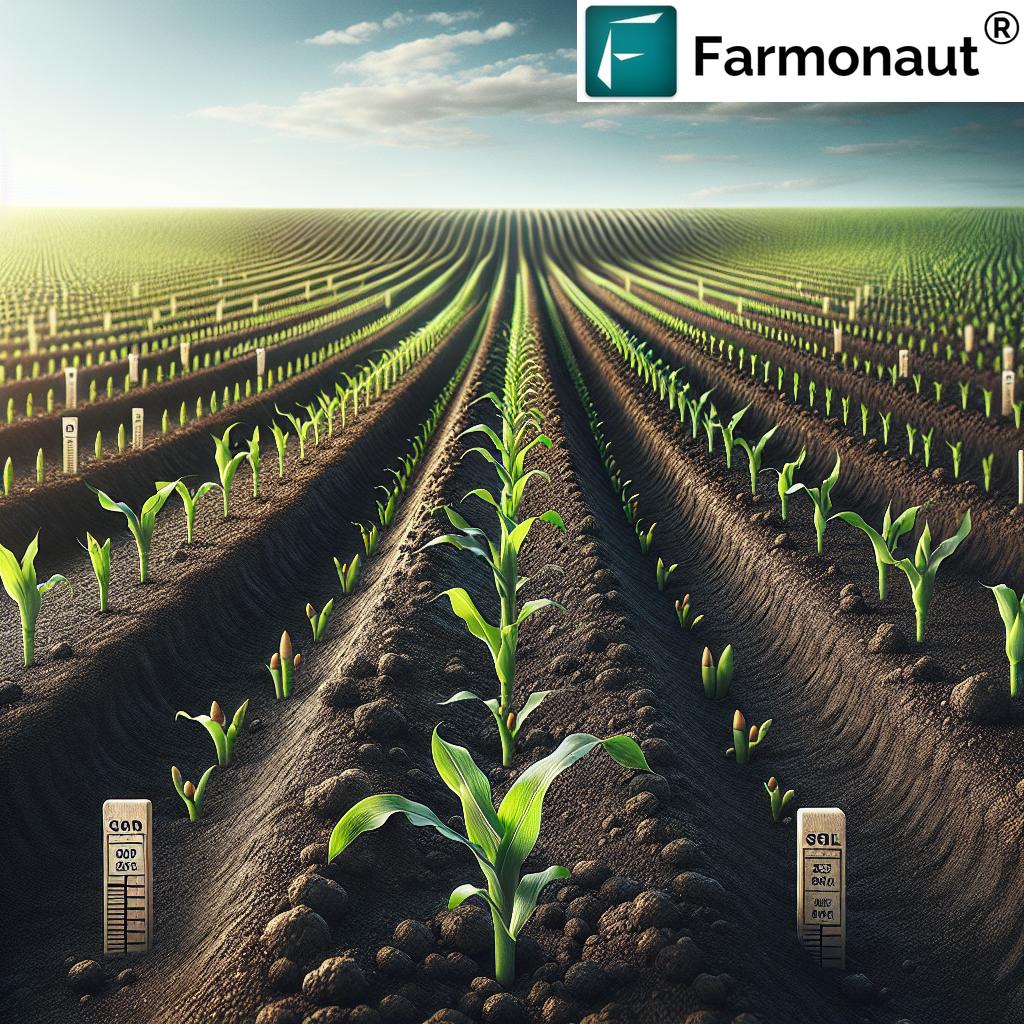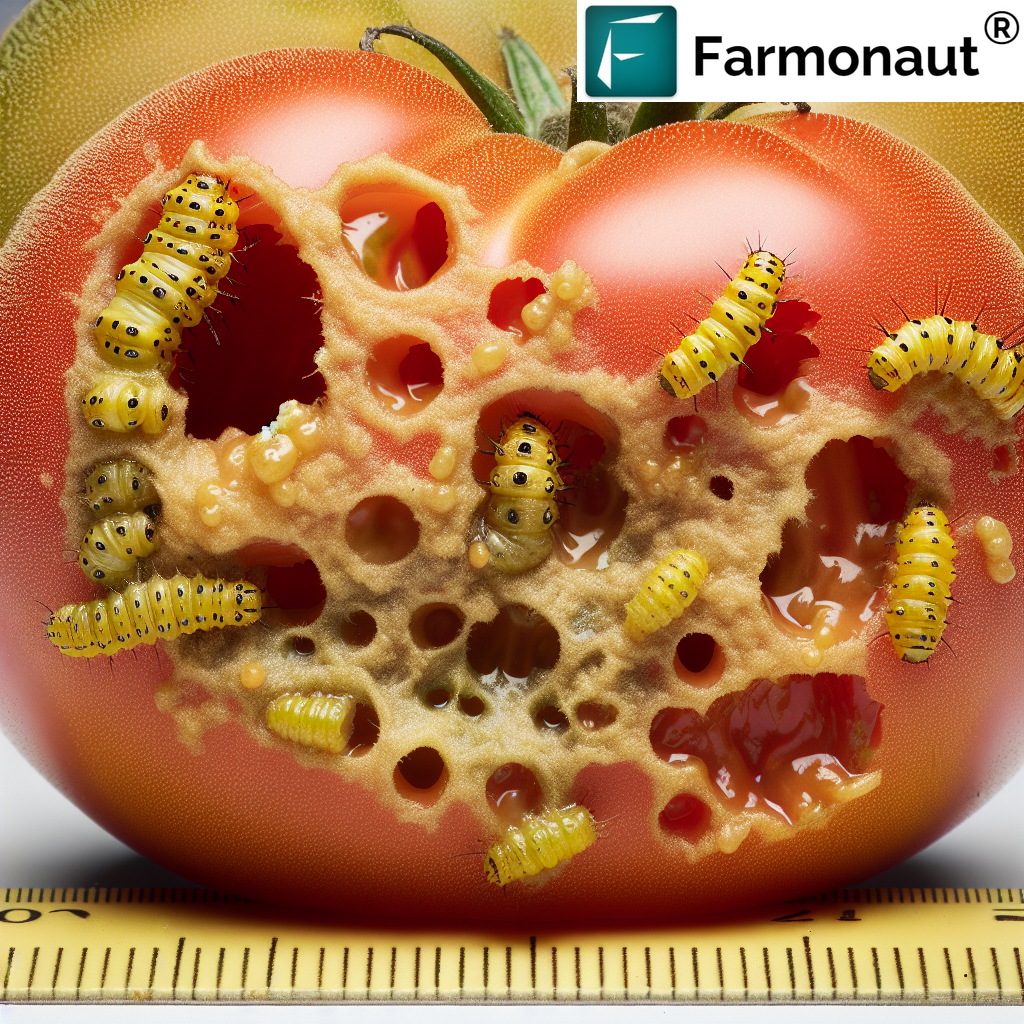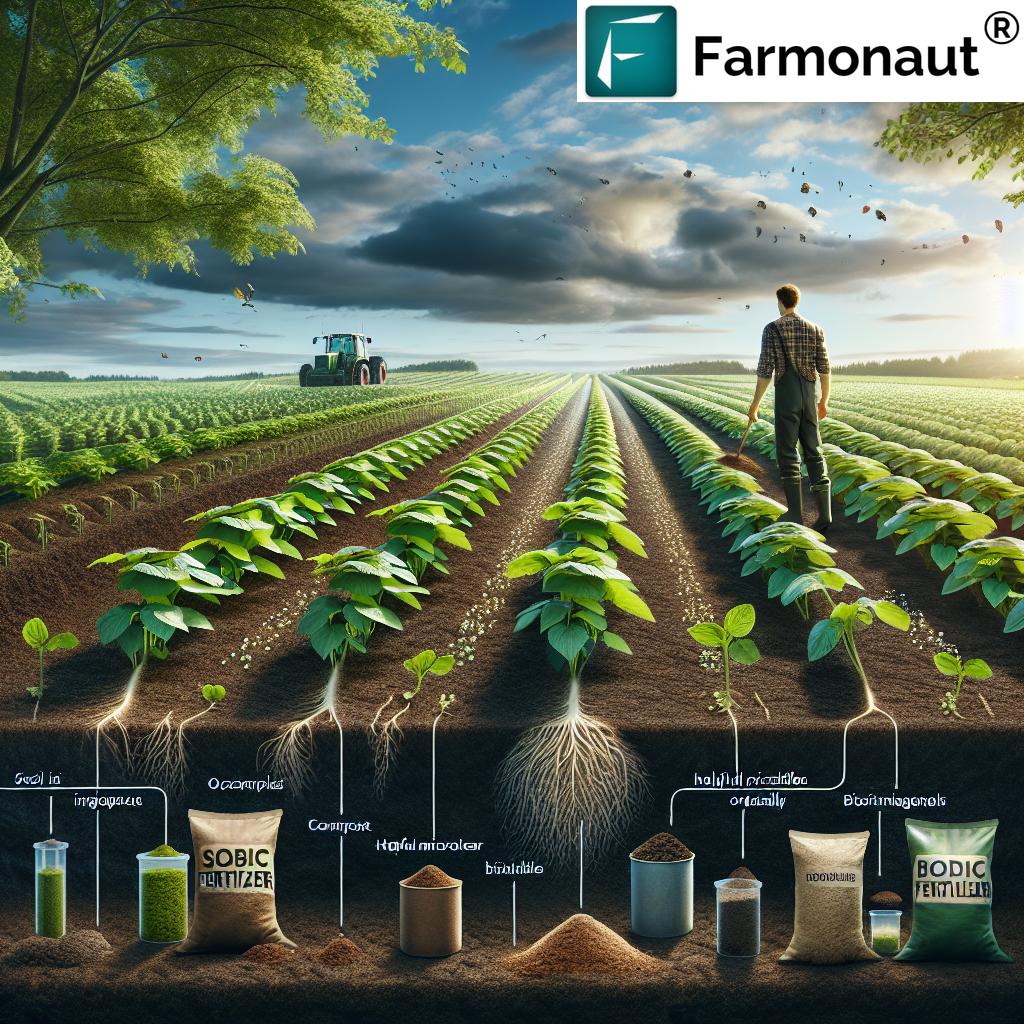Agronomy Meaning & Sustainable Practices 2026
Introduction: The Meaning of Agronomy in Modern Agriculture
Agronomy is more than the science of producing crops—it’s the driving force behind sustainable growth, food security, and environmental health in an ever-changing agricultural landscape. As global populations continue to expand, the strain on arable land, water resources, and ecological systems intensifies. The role of agronomists, agronomy companies, and innovative management techniques is now more critical than ever in shaping a resilient, efficient, and sustainable future for farming.
At the heart of agronomy is a commitment to integrated land, soil, crop, and water management—a fusion of traditional expertise, modern science, and emerging technology that is setting the pace for agriculture through 2026 and beyond.
The Evolution of Agronomic Practices: From Tradition to Technology
The meaning of agronomy has evolved substantially over the decades. Where once crop production relied mostly on traditional practices passed down generations, today’s modern agriculture leverages robust data, AI-powered tools, and precision technology to optimize yields, reduce environmental impacts, and foster long-term sustainability.
- Pre-Industrial Era: Manual labor, local seed selection, natural fertilizers (e.g., animal manure), and simple rotation methods defined early agronomy.
- Green Revolution: Widespread adoption of synthetic inputs, high-yield crop varieties, and mechanization led to dramatic growth—but at a cost to soil health and biodiversity.
- 21st-Century Agronomy: Focus on regenerative practices, integrated pest management, cover cropping, reduced tillage, and, fundamentally, the convergence of science, technology, and hands-on experience.
This drive has given rise to the agronomy company, a pivotal player in delivering tailored solutions for farmers, promoting sustainable practices, and ensuring the health of our global agricultural ecosystems.
Core Disciplines: Understanding Agronomy and Its Significance
What is the meaning of agronomy? At its core, agronomy involves the study and optimization of plants for food, fuel, fiber, and land reclamation. But its reach extends far beyond crop management. Modern agronomy is a holistic, science-driven discipline that integrates:
- Soil Science and Fertility: Analyzing and improving soil health, chemistry, and structure to support resilient plant growth and optimal nutrient cycling.
- Plant Genetics and Breeding: Applying genetic insights to develop crop varieties resistant to pests, diseases, drought, and changing climates.
- Pest and Disease Management: Using integrated pest management (IPM) strategies that reduce synthetic chemical reliance and support ecological balance.
- Water Management: Optimizing irrigation systems to maximize water use efficiency and limit waste or runoff.
- Resource Optimization: Tailoring input use (fertilizers, water, pesticides) for both productivity and environmental preservation.
- Sustainability: Incorporating conservation tillage, cover cropping, rotation, and nutrient recycling for long-term ecosystem health.
In current agricultural landscapes, agronomists work closely with farmers, policymakers, and agribusinesses to implement science-based solutions that improve productivity and reduce negative ecological footprints.
Precision Agriculture and Hands-On Agronomy: A Transformative Approach
Hands on agronomy—applied, evidence-driven management—is revolutionizing how farmers and agronomy companies operate. By adopting a data-driven approach, this paradigm tackles ever-shifting field conditions, erratic weather patterns, pest evolution, and soil management challenges head-on.
The advent of precision agriculture means deploying tools such as:
- Remote Sensing & Satellite Imagery: Real-time assessment of vegetation, soil health, and moisture status.
- Drone Surveillance: Targeted aerial monitoring for pest outbreaks and crop stress.
- Soil Mapping and Analytics: Detailed spatial understanding for site-specific input recommendations.
- Variable Rate Technology (VRT): Automated application of nutrients and water based on in-field data variance.
- AI and Machine Learning: Predictive models for yield forecasting, disease risk, and resource allocation.
Companies like CHS Agronomy exemplify these hands-on agronomy approaches, bringing together agronomic expertise and robust analytics to deliver personalized crop management, promote sustainable nutrient practices, and foster regenerative agriculture. Their actionable insights, combined with local agronomy centers, empower farmers to make timely, targeted interventions and enhance resilience—all while optimizing costs and supporting sustainability.
Role of Agronomy Centers in Supporting Sustainable Growth
Agronomy centers have become critical hubs for knowledge transfer, innovation, and community engagement. These centers connect researchers, farmers, and agronomy companies, serving as:
- Training Grounds: Hosting workshops, demonstrations, and field days to showcase new techniques and technology.
- Innovation Incubators: Providing access to pilot programs, experimental plots, and on-site consultations.
- Digital Learning Platforms: Leveraging mobile apps and online resources for participatory management and diagnostic assistance.
- Knowledge Nodes: Bridging the gap between scientific research and practical, region-tailored application in the field.
In 2025 and beyond, these centers will increasingly deploy digital tools and climate-smart recommendations, propelling sustainability and meaningful farmer participation in adaptive management.
Comparative Benefits Table: Sustainable vs. Conventional Agronomy
To underscore the environmental benefits of sustainable agronomy versus conventional methods, view the comparative table below. Real-world, evidence-based data from agronomy studies highlight the gains in soil health, water use, yield stability, and carbon footprint reduction.
| Agronomy Practice | Soil Health Impact (Estimated) | Water Use Efficiency (Estimated) | Yield Stability (Estimated) | Carbon Footprint (Estimated) |
|---|---|---|---|---|
| Conventional: Synthetic Fertilizer Application | Soil organic matter decline, compaction risk | Low (20% water loss typical) | Moderate (vulnerable during stress) | High (Greenhouse gas emissions, up to 30% higher CO₂-e) |
| Sustainable: Cover Cropping | 30% higher soil organic matter, improved micronutrient balance | High (up to 20% less water use) | Consistent, more resilient to climatic shocks | Reduced (10-20% lower CO₂-e) |
| Conventional: Monoculture Farming | Accelerates soil nutrient depletion | Inefficient (prone to runoff) | Volatile (risk of total crop loss to pests/disease) | Elevated (low biodiversity support) |
| Sustainable: Crop Rotation | Enhances nutrient cycling, reduces disease buildup | Improved (efficient water distribution) | Stable, 15% average yield increase over monoculture* | Lowered emissions, increased carbon sequestration |
| Conventional: Excessive Irrigation | Waterlogged soils, salinity buildup risk | Poor (40% water loss potential) | Uncertain (higher variability) | Increased (due to energy use and runoff-related emissions) |
| Sustainable: Precision Irrigation | Prevents erosion, preserves soil structure | Excellent (reduces water waste by up to 30%) | Predictable, adaptable to drought years | Minimized energy and fertilizer runoff emissions |
*Estimated based on meta-analyses of multi-year crop rotation studies.
Satellite & Digital Tools: Innovation in Modern Agronomy
The integration of satellite technology, artificial intelligence, and easy-to-use digital tools is moving agronomy at an unprecedented pace. These innovations allow agronomy companies and farmers to monitor, analyze, and adjust in real time—delivering a measurable impact on efficiency, sustainability, and growth.
Key Areas of Impact:
- Satellite-Based Crop Monitoring: High-frequency updates on crop vigor, soil moisture, disease risk, and more.
- AI-driven Advisory Systems: Personalized field recommendations, early warning for hazards, yield prediction, and input optimization.
- Blockchain Traceability: End-to-end supply chain verification of agricultural produce for transparency and trust.
- Fleet & Resource Management: Smarter logistics, fuel savings, and efficient machinery allocation.
For example, Farmonaut’s Carbon Footprinting platform empowers farmers and organizations to quantify, monitor, and reduce emissions from agronomic practices—supporting global climate goals.
Farmonaut: Integrated Satellite Solutions for Agronomy
As a pioneering satellite technology company, Farmonaut delivers advanced, affordable tools to support sustainable agronomy, soil management, and efficient resource use for farmers, agribusinesses, and governments worldwide:
- Satellite-Based Monitoring: Real-time NDVI, soil conditions, and environmental impact analysis for effective crop and land management.
- Jeevn AI Advisory System: AI-driven, personalized insights on weather, plant health, and intervention timing for precision, hands-on agronomy in the field.
- Blockchain Traceability: Secure product journey verification, protecting against fraud and ensuring consumer trust. Learn more about product traceability here.
-
Fleet & Resource Management: Optimizes machinery deployment, reduces costs, and increases overall operations efficiency for organizations cultivating large agricultural production areas.
Explore our fleet management solutions here. - Environmental Impact Tracking: Supports compliance, reporting, and sustainability improvement initiatives in line with global best practices.
-
API Integration: Enables easy connection of satellite data and insights to proprietary systems.
API Portal |
API Developer Docs
Our mission is to democratize access to cutting-edge satellite insights, supporting businesses, producers, and governments as they strive for greater productivity, transparency, and sustainability across agriculture and allied industries.
 Download the Farmonaut Android app for real-time field monitoring & precision insights.
Download the Farmonaut Android app for real-time field monitoring & precision insights.
 Get Farmonaut on iOS for on-the-go satellite crop analytics and smart agronomy advice.
Get Farmonaut on iOS for on-the-go satellite crop analytics and smart agronomy advice.
Environmental Sustainability & Integrated Management
The future of agriculture hinges on the adoption of integrated agronomy methods that balance production with ecological stewardship. Key sustainable practices recognized globally include:
- Conservation Tillage: Reducing soil disturbance, retaining organic matter, and limiting erosion.
- Cover Cropping: Suppressing weeds, fixing nitrogen, and improving biodiversity.
- Integrated Pest Management (IPM): Combining biological controls, monitoring, and targeted interventions to reduce synthetic chemical use.
- Variable Rate Fertilization: Applying nutrients as needed, where needed, minimizing waste.
- Nutrient Recycling: Utilizing manure and compost to close nutrient cycles, reducing reliance on synthetic inputs.
- Water Conservation through Precision Irrigation: Drip and sensor-based irrigation techniques that dramatically increase water use efficiency.
These approaches, supported by agronomy companies and centers, are transforming field management and directly align with United Nations Sustainable Development Goals for land, water, and climate resilience.
Explore large scale farm management via powerful admin tools & dashboards for real-time tracking.
Key Strategies for Resilient Farming & Food Security
Meeting the challenges of the future means cultivating farming systems that are flexible, data-rich, and deeply attuned to their environment. Resilient agriculture in 2026 will emphasize:
- Diversification: Rotation, intercropping, and integrating livestock to buffer against weather, pest, and market shocks.
- Climate Smart Techniques: Selecting crop genetics and practices that adapt to shifting climate patterns and resource constraints.
- Real-time Monitoring: Leveraging platforms like Farmonaut for full-season crop health insights, soil variability tracking, and predictive analytics.
- Transparency and Traceability: Using blockchain solutions to ensure product authenticity and build supply chain resilience. Learn more about Farmonaut’s traceability for improved food security.
- Fintech & Access to Credit: Satellite-based verification of fields and crop health supports streamlined loan & insurance—Crop Insurance Solutions from Farmonaut reduce risk and enable growth.
- Continuous Education: Active involvement with agronomy centers and online platforms for upskilling and adaptation to new methods.
The Future of Agronomy: Trends for 2026 and Beyond
Agronomy in 2026 will be defined by several powerful trends:
- Widespread Digitalization: Near-universal adoption of satellite, AI, and mobile solutions for nearly all decision points in the crop cycle.
- Increased Role of Data Analytics: Predictive modeling for soil management, input optimization, pest and disease mitigation, and benchmarking farm performance against regional peers.
- Scaling Regenerative Agriculture: Principles of soil building, CO₂ sequestration, and ecosystem services will move from pilot projects to mainstream practice.
- Decentralized Agronomy Services: Online centers and virtual consultations expand access to hands-on expertise, regardless of geography.
- Greater Emphasis on Food Traceability & Ethics: Consumer demand and regulatory oversight shorten supply chains while verifying origin, input use, and sustainability claims.
The next decade promises further integration of genomics, remote sensing, drone automation, and possibly even on-field robotics—demonstrating that the meaning of agronomy will continue to adapt in step with the needs of people, planet, and markets.
Farmonaut Subscription Solutions
For those looking to transform farming with scalable, data-driven agronomy tools, Farmonaut offers flexible subscription plans through web, Android, and iOS platforms, as well as accessible APIs:
FAQ: Agronomy & Sustainable Agriculture
-
What is agronomy and why is it important?
Agronomy is the science and technology of producing and using plants for food, fuel, fiber, and land reclamation. It integrates crop science, soil science, pest management, water use, and environmental considerations to maximize yields while sustaining the ecosystem. Its role is critical for future food security and climate resilience.
-
How do agronomy companies support sustainable agriculture?
Agronomy companies provide research, field services, advanced technology (like satellite monitoring and AI), and personalized recommendations to improve crop health, optimize inputs, and foster sustainability. They are central to integrating science with practical, region-specific farming solutions.
-
What are some examples of hands on agronomy?
Examples include on-field soil health assessments, real-time diagnostic support via digital apps, tailored fertilizer and water management, and drone-guided pest surveillance. Hands on agronomy unites digital tools and personal expertise to deliver directly applicable insights to farmers.
-
What are the major sustainable agronomy practices of 2026?
Cover cropping, precision irrigation, integrated pest management, conservation tillage, crop rotation, and blockchain-backed product traceability are leading sustainable agronomy practices in 2026.
-
How can satellite-based management help farmers?
Satellite tools provide field-wide monitoring of crop health, early pest/disease alerts, soil status, and even carbon emissions estimates. This enables farmers to make informed, site-specific management decisions—saving resources, boosting yields, and minimizing environmental impacts. Farmonaut, for instance, delivers satellite monitoring on web, iOS, and Android platforms.
-
What is meant by variable rate fertilization and why is it important?
Variable rate fertilization is the application of different amounts of fertilizer in different parts of a field according to soil and crop needs. It reduces waste, limits environmental runoff, and optimizes yield potential.
Conclusion: Agronomy for a Sustainable Future
Agronomy—and the meaning within this discipline—remains indispensable to building a resilient, productive, and ecologically balanced foundation for the food systems of today and tomorrow. By combining traditional wisdom, cutting-edge technology, and scientific rigor, agronomy companies, agronomy centers, and practitioners worldwide are driving sustainable growth.
As we move through 2025, 2026, and beyond, the adoption of holistic, hands on agronomy approaches and smart management methods will be pivotal to overcoming the challenges posed by climate change, resource constraints, and the need for increased global food production.
- Embracing sustainability in agronomy practices means prioritizing long-term soil health, water efficiency, and carbon reductions while optimizing yields.
- Farmonaut is proud to offer advanced, accessible satellite-driven tools and analytics to support these goals—empowering farmers, agri-businesses, and governments with the knowledge and insights to succeed in a data-driven world.
- The future of agronomy is data-smart, resilient, and fundamentally sustainable. Together, we can support regenerative agriculture, food security, and planetary health for generations to come.
Discover more about how technology is transforming agronomy and agriculture:
• Crop Plantation Forest Advisory – Enable smarter crop and forest management through Farmonaut’s comprehensive advisory platform.
• Large Scale Farm Management Tools – Streamline monitoring and resource allocation.
• Environmental Impact & Carbon Tracking – Achieve sustainability goals while maintaining profitability.








